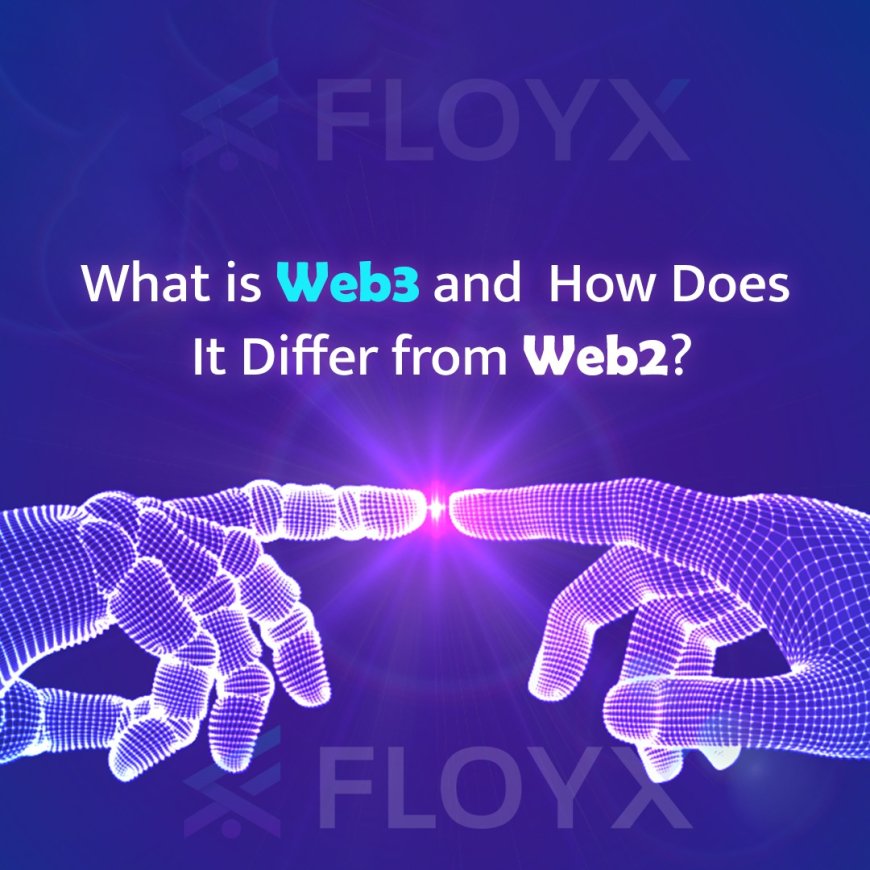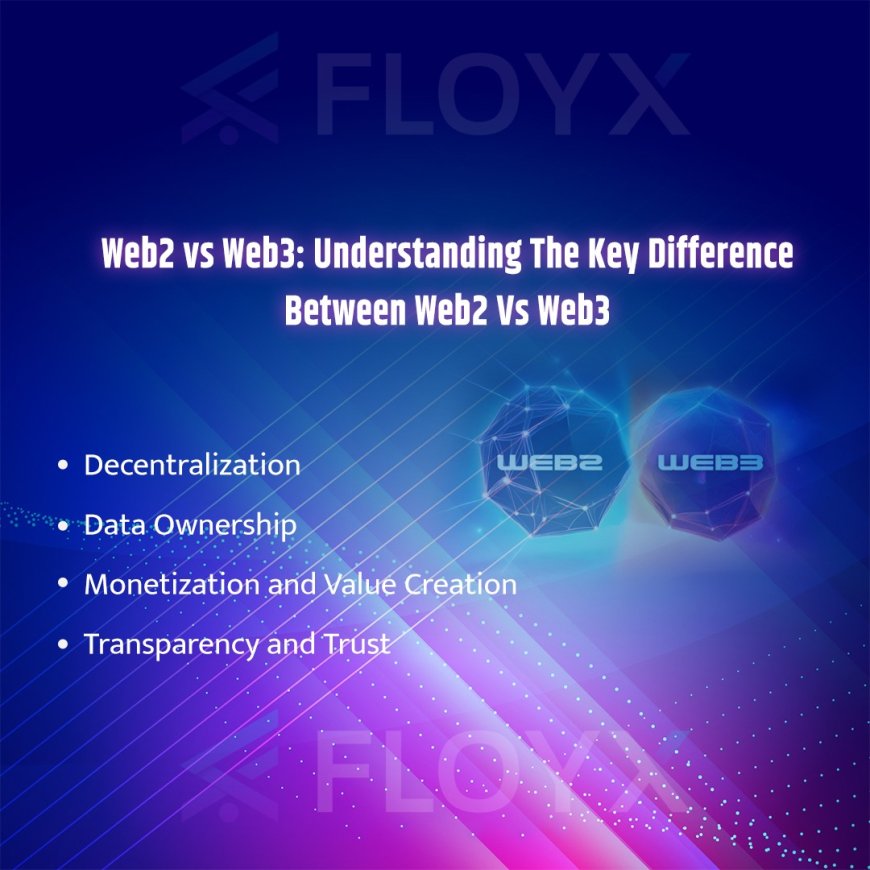What is Web3 and How Does It Differ from Web2?

This article discusses the changes the internet has gone through since its introduction to transform society. But today, everybody is talking about Web3, a term trending across many industries. But what exactly is Web3, and how is it different from Web2? Now it’s time to take a closer look at this subject and to reveal the peculiarities of two web paradigms.
Understanding Web2
To know what Web3 is, one must see What Web2 is. Web2, also known as the read-writeweb, is the web that exists today. It focuses on content creation by users social networking, and interactive spaces. Of course, the most vivid examples of Web2 are such Social Media as Facebook, Twitter, Instagram, and others. They enable users to post and discuss content, post comments, and perform activities that allow them to have a community with centralized control over user data and activity.
In Web2, Social Media companies control the data, algorithms, and user experience. It has helped in creating smooth interactions and immense traffic in digital communication, but at the same time, it has become a point of controversy regarding data ownership and privacy.
Enter Web3
Web3 is a term used to refer to the next generation of the World Wide Web that offers more decentralization and power to the users. In its essence, Web3 hides and builds a world where users have more control rather than being controlled by big giants. It uses such technologies as Blockchain to realize such goals.
Web3 also brings new related ideas and tools into the picture. Among all the advancements, one can single out the implementation of the Blockchain as the basis for many Web3 applications. Blockchain is a distributed database that creates an activity record and stores it in many computers so that no single record can be edited or deleted without changing it across the other records. This technology promotes transparency, security, and the possibility of trusting transactions without a centralized controlling body.
Web2 vs Web3: Understanding The Key Difference Between Web2 Vs Web3

1) Decentralization:
Like the previous generation, Web2 depends on centralized platforms and services to operate. Large SSMs regulate personal information and profit off of it, and ownership of platforms is in the hands of a single party.
Web3 focuses on decentralization in contrast to Web2. It applies such technologies as Blockchain, in decentralizing the control of the network among the users. Thus, there is no center to control Decentralized Social Media, and users own their data and interactions.
2) Data Ownership:
In Web2, data is owned and managed by the servers where it is stored. People produce content and distribute datasets, but the content belongs to the respective platforms.
Web3 shifts this paradigm. The Blockchain simplifies control over data since it belongs to the users. Web3 Social Media also offers the ability to own the data and sometimes sell back the data to the platforms, changing the entire data ownership structure.
3) Monetization and Value Creation:
Most Web2 platforms are managed and financed through advertising and data gathering. Platform owners capture the value created by users.
New monetization opportunities also appear in Web3 as a result of such mechanisms as Socialfi, which combines finance and social networks. Some platforms allow users to receive rewards or cryptocurrencies in exchange for their engagement and input. They have profited better in value distribution. While reciprocating corresponding values for users’ contributions.
4) Transparency and Trust:
Web2 platforms are centralized and often criticized for lacking transparency. Thus, one can understand that people do not have a clear vision of how applications use their information or how algorithms work.
Web3 wants to bring in more openness. Blockchain records transactions and many activities clearly, allowing all users to verify them and gain confidence in the system's workings. It can be valuable in Web3 Social Media, where data processing treatments and algorithmic choice openness strengthen user confidence.
1. Interoperability:
1) Like most Web2 services, they are often provided in LIMBS, meaning that the compatibility of one service to another is very complex. For example, reposting some content on different Social Media accounts may require several processes.
2) Web3 emphasizes interoperability. When different platforms and applications use various protocols & are based on Blockchain, their work is interconnected. It makes the related digital ecosystems more interrelated and flexible.
Examples of Web3 Platforms
Several of the Top Web3 websites and platforms are already demonstrating the possibilities of this new model. These include:
• Steemit: A Decentralized Social Media app that pays users in cryptocurrency for their content and moderation.
• Mastodon: A social layer implemented through a network of servers that allows users to join other servers yet communicate on the global level.
• Audius: An application that plays music and does not store content, allowing artists to own what they produce and receive payments directly from consumers.
All these networks represent decentralization and people’s power shift, demonstrating how Web3 can redefine conventional Social Media paradigms.
Know More - - What is an example of a DeFi?
The Future of Web3
As Web3 advances, it will influence the internet and Social Media platforms. The contrast of a new generation internet that will be decentralized, transparent, and in most cases, created for the user is promising. Decentralized Social Media platforms may be on the verge of recapturing a new era of Internet relations with better control, privacy, and monetary rewards.
It is still unclear, but the core ideas of Web3 and technologies that lay the groundwork for this new vision of openness and decentralization make it possible to dream of a future where users have even more control over their experience. Whether it is the Web3 Social Media, the Blockchain, or Socialfi solutions, the change to Web3 is a new paradigm for our online lives striving to create a fair society on the Net.
In Conclusion, Web3 is an innovative concept that defines a new paradigm of people's engagement with the World Wide Web. So, by identifying the guidelines and prospects, it’s possible to be ready for the wave of digital interactions.












